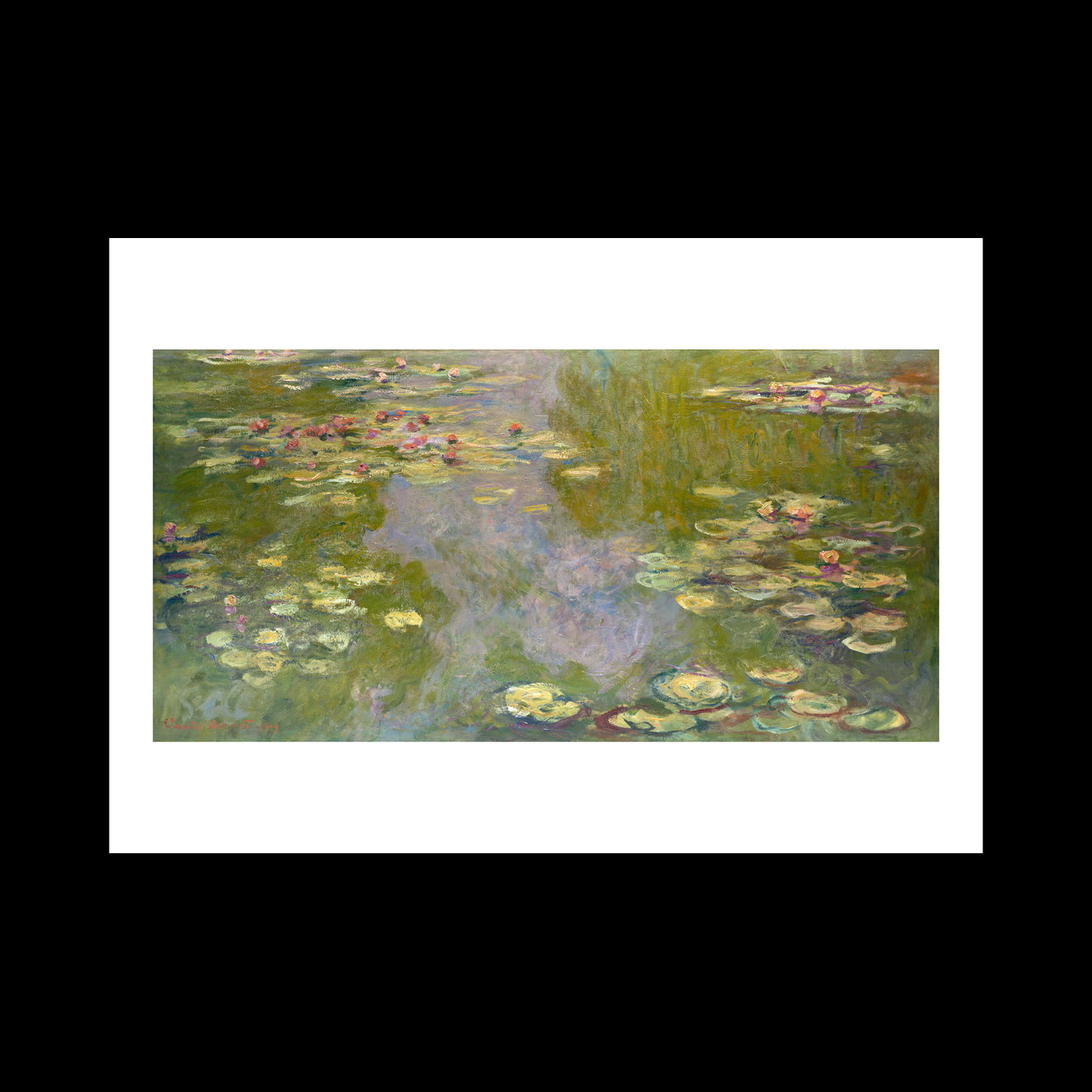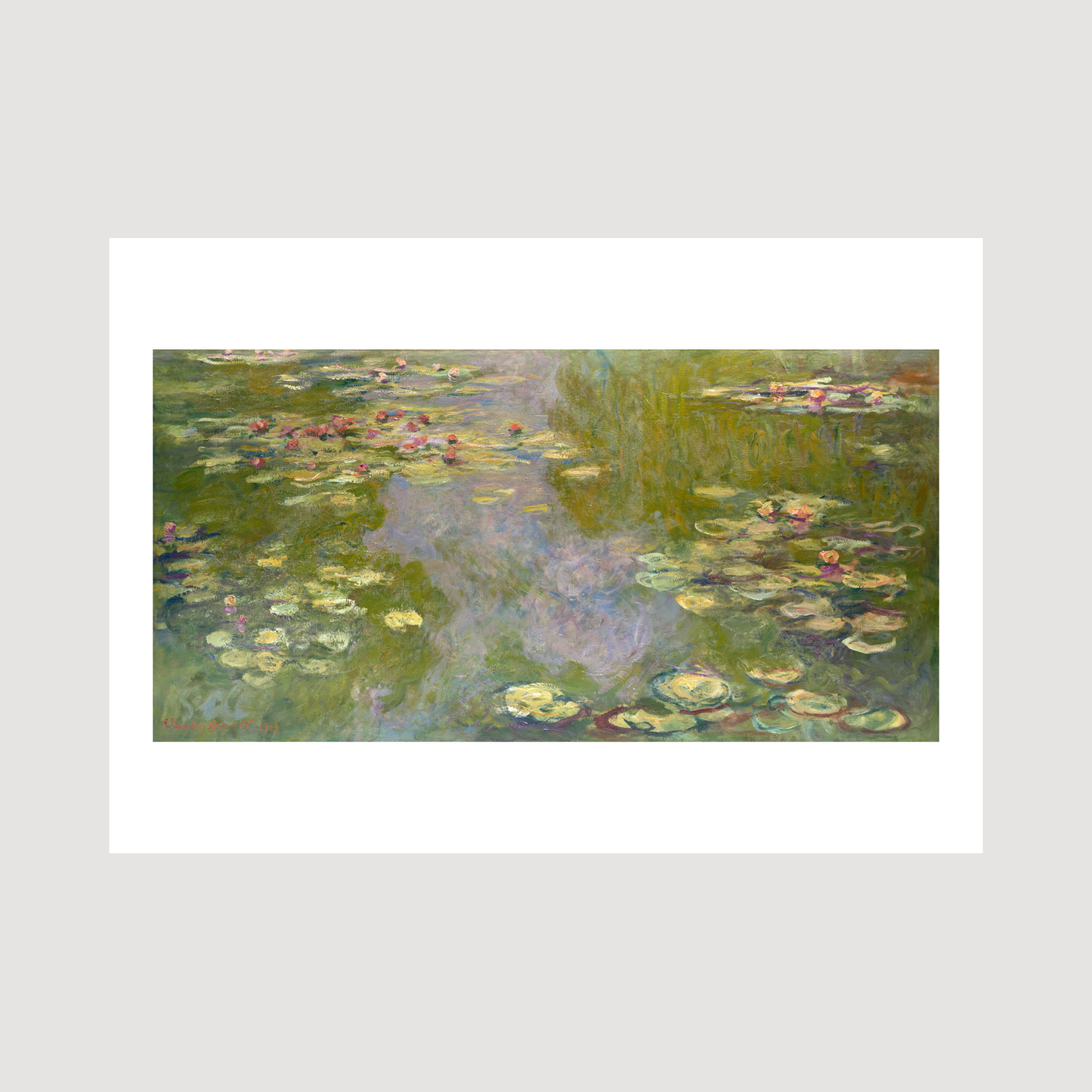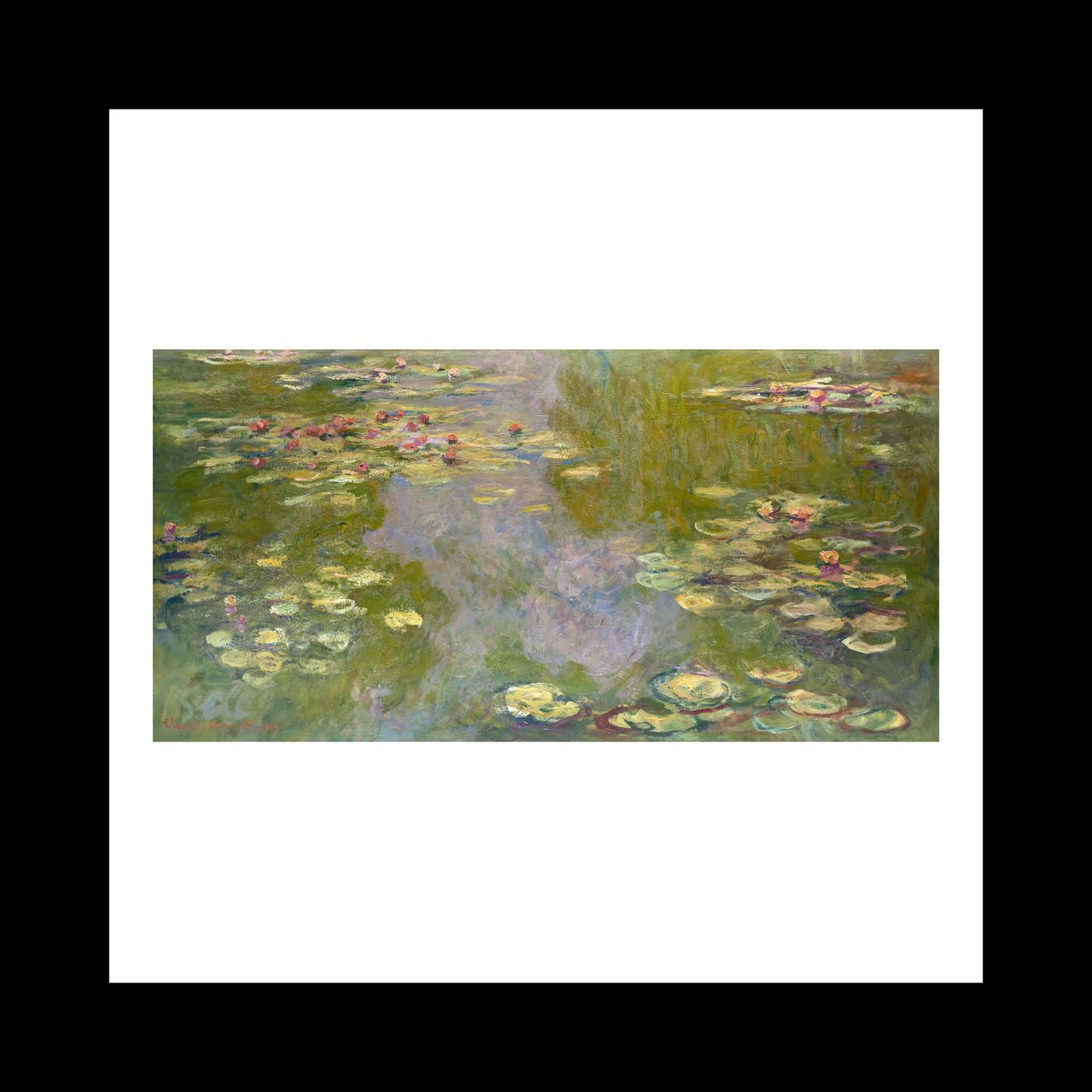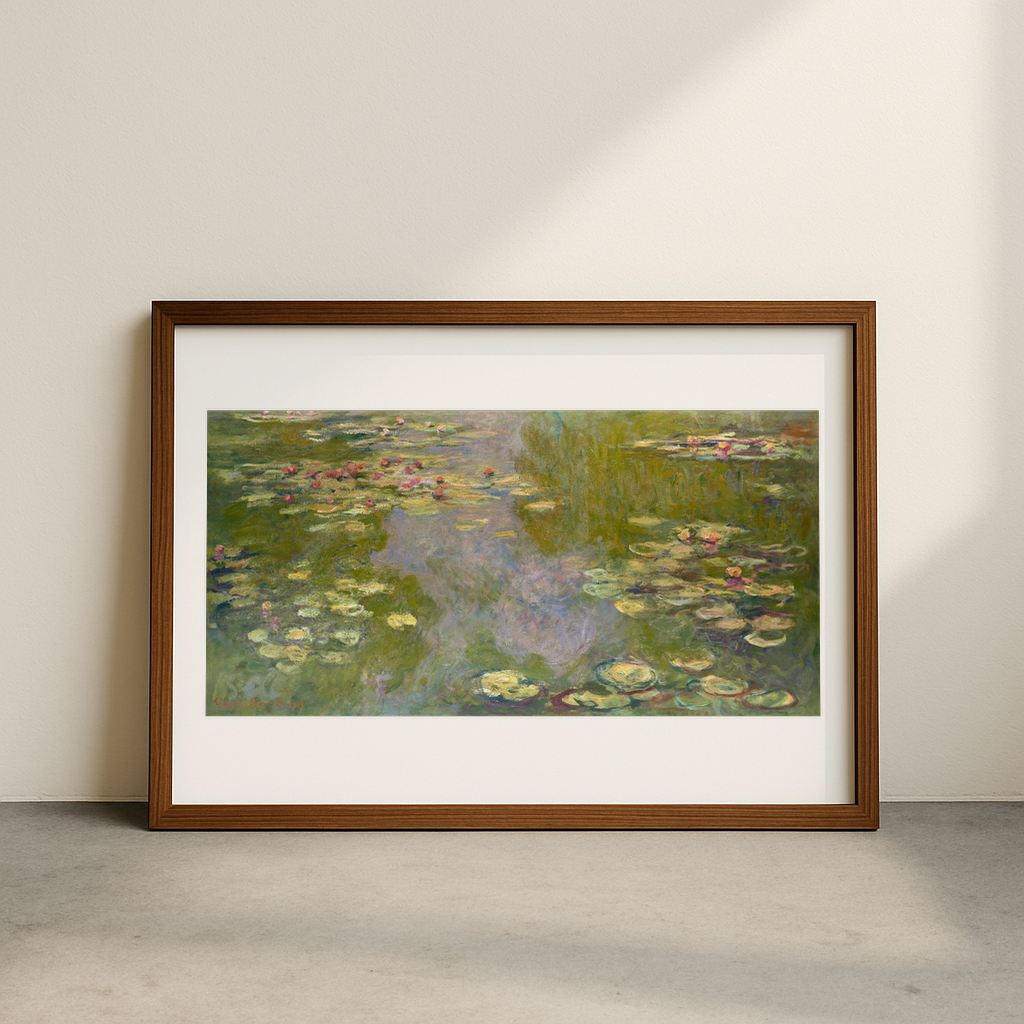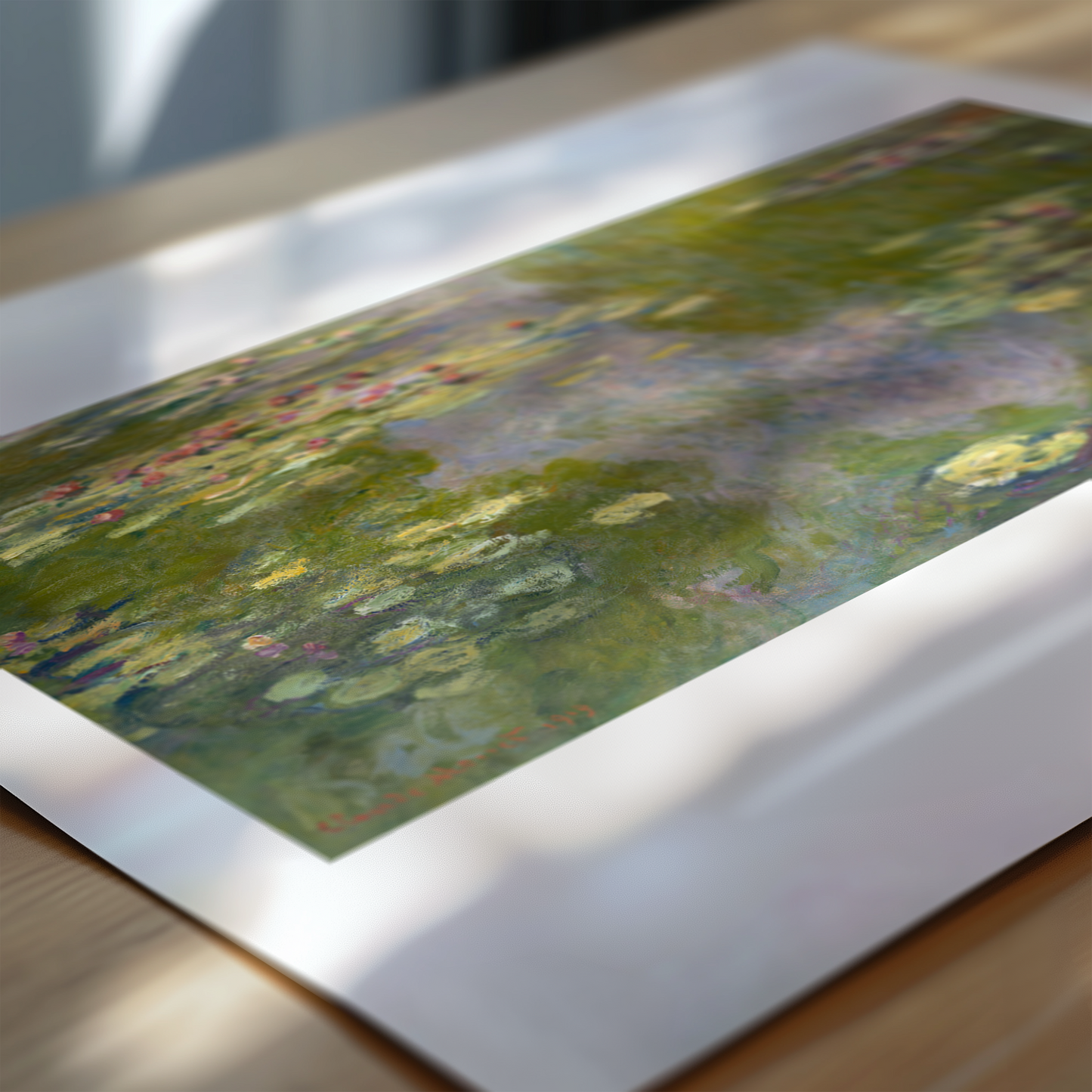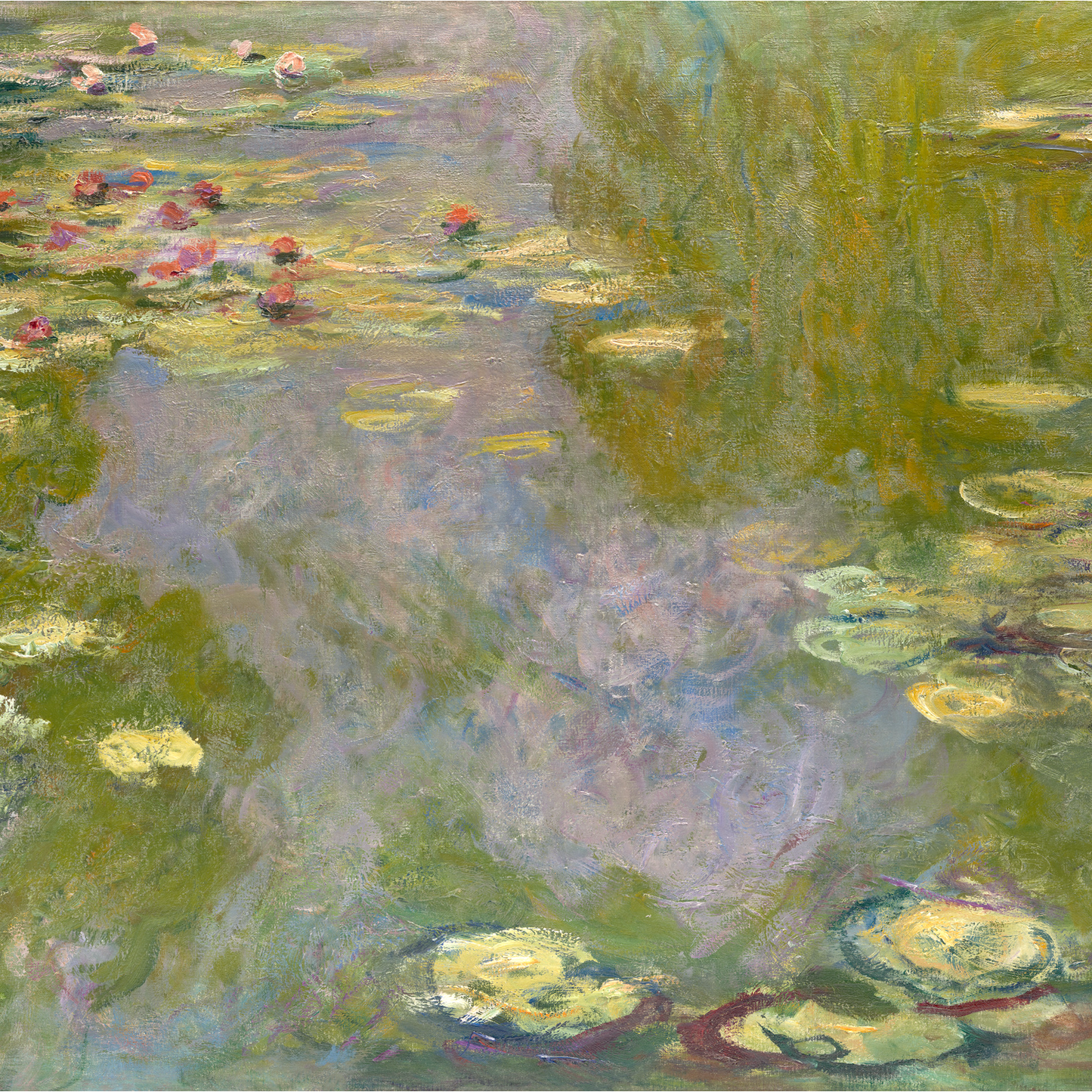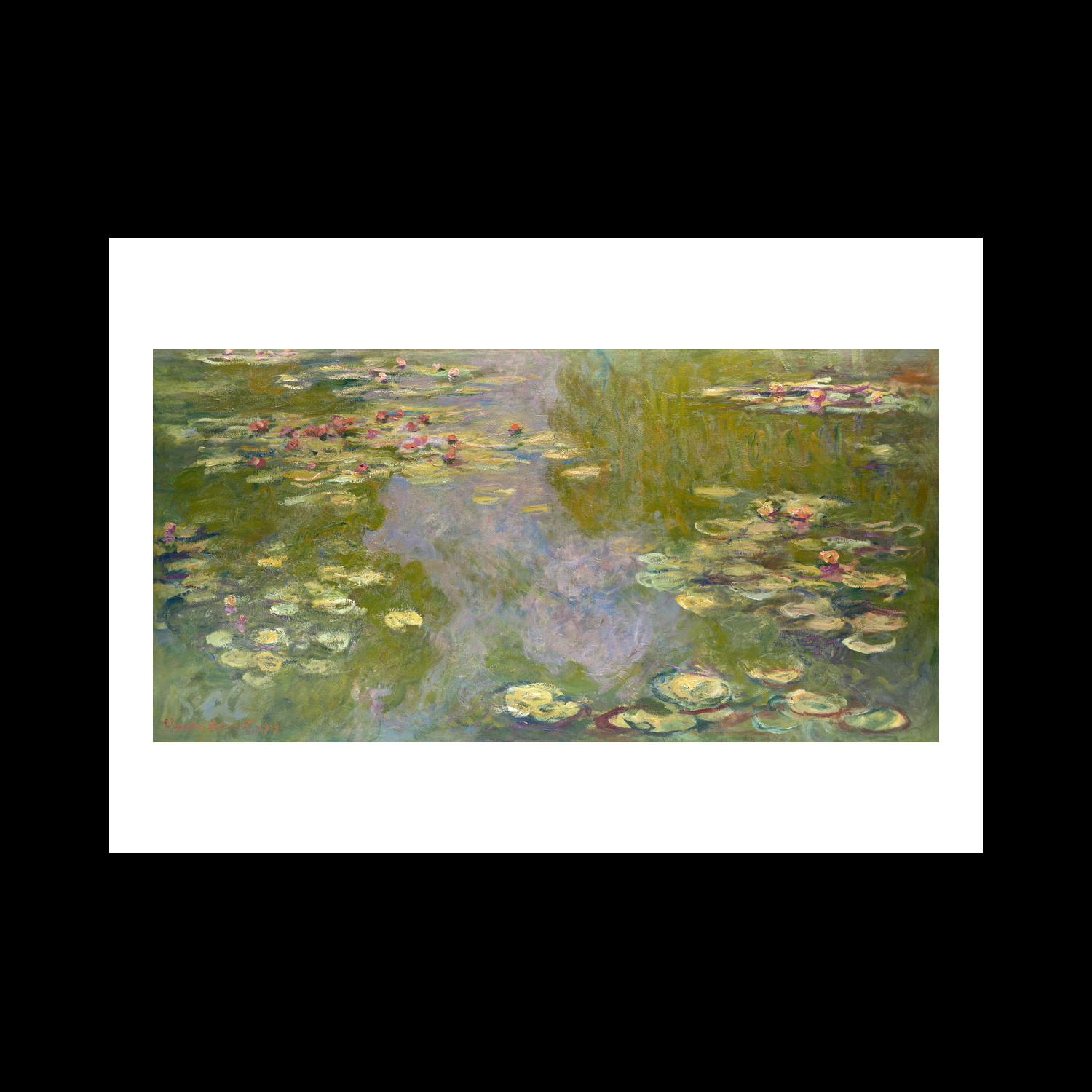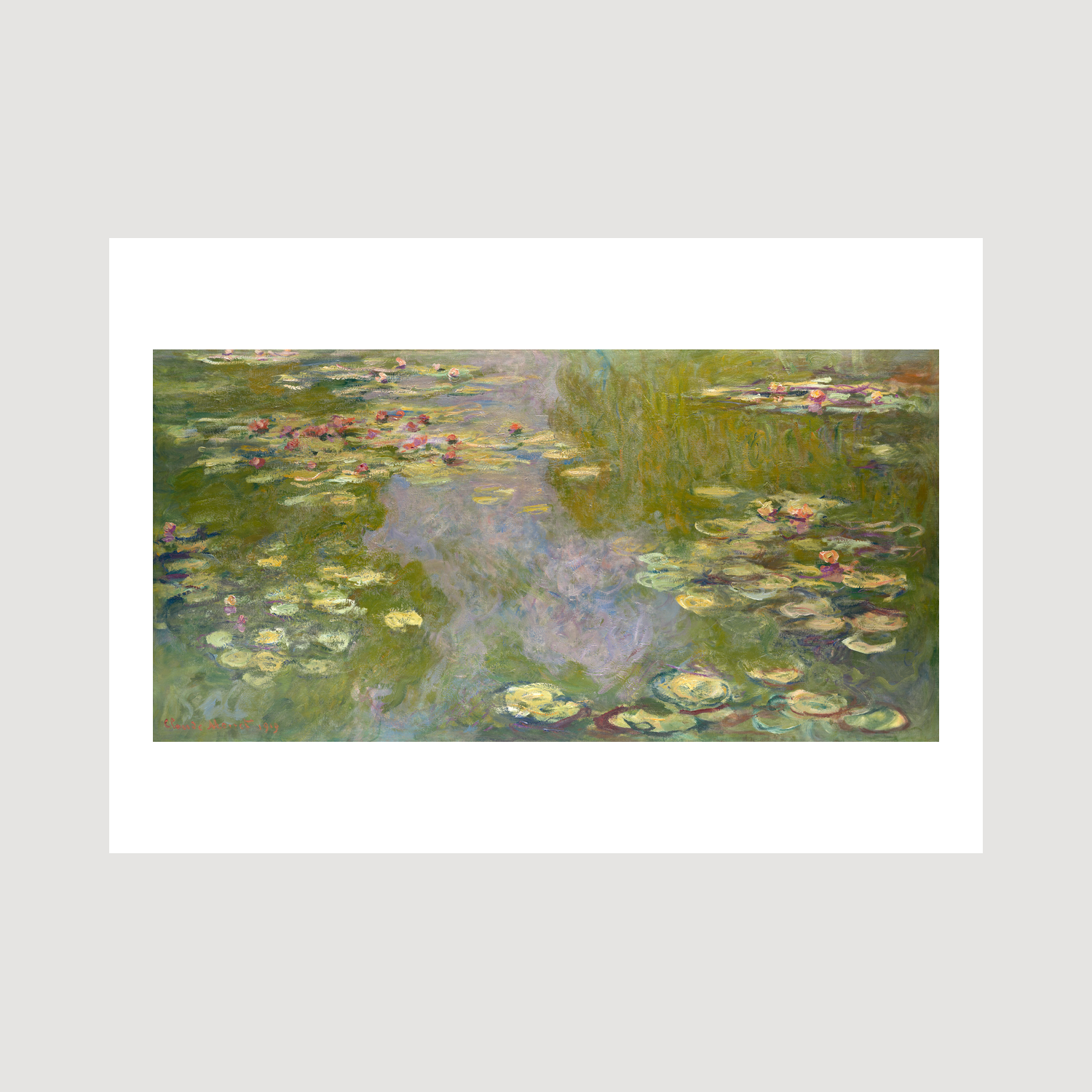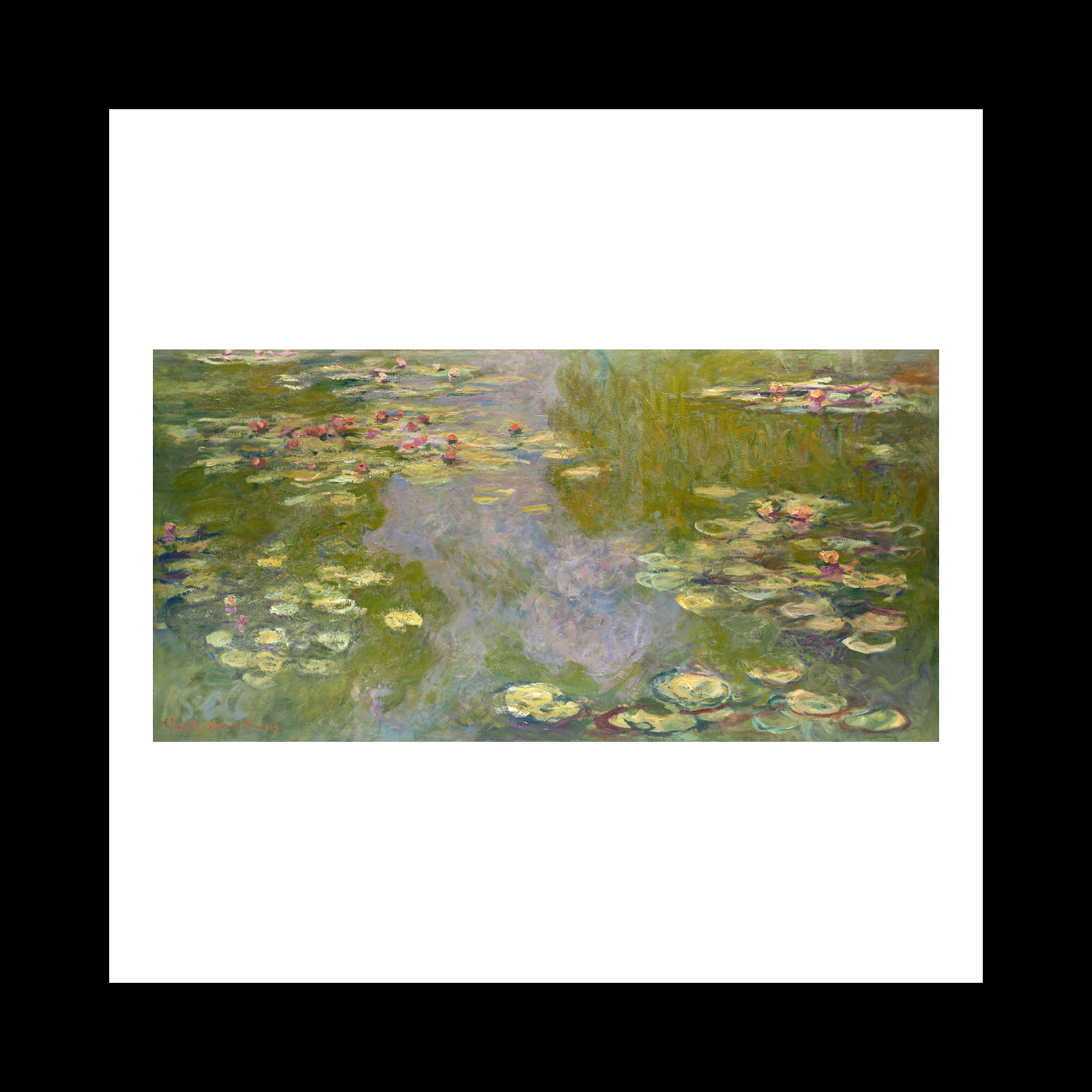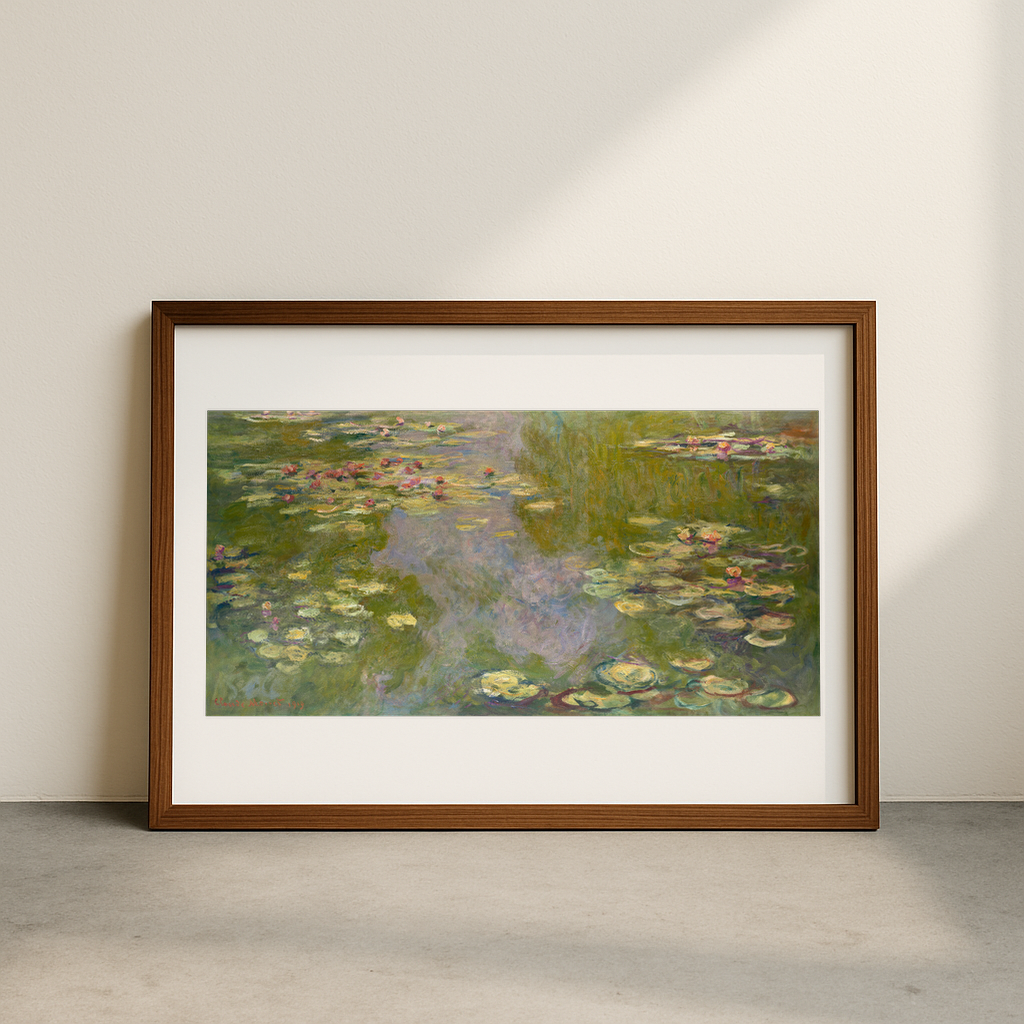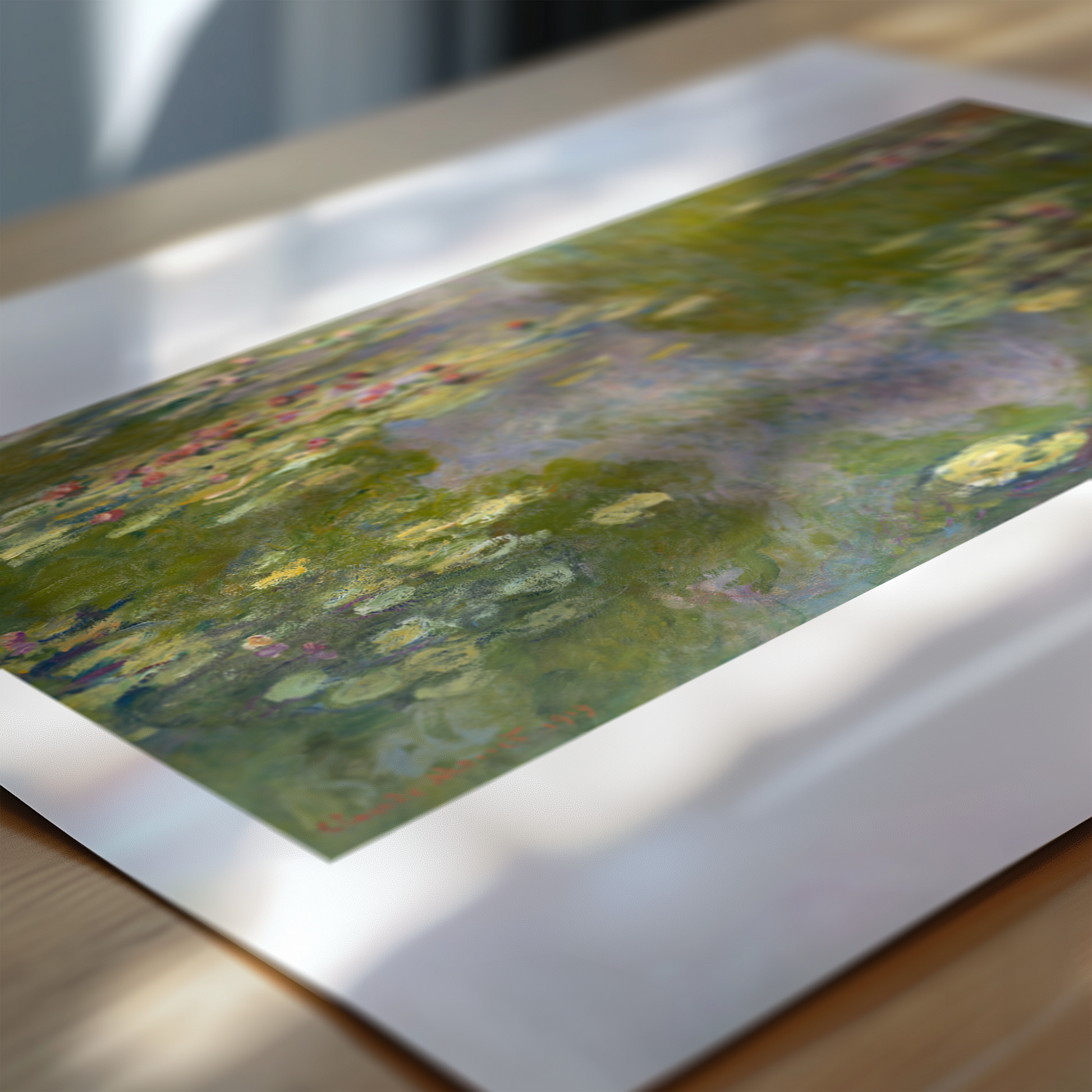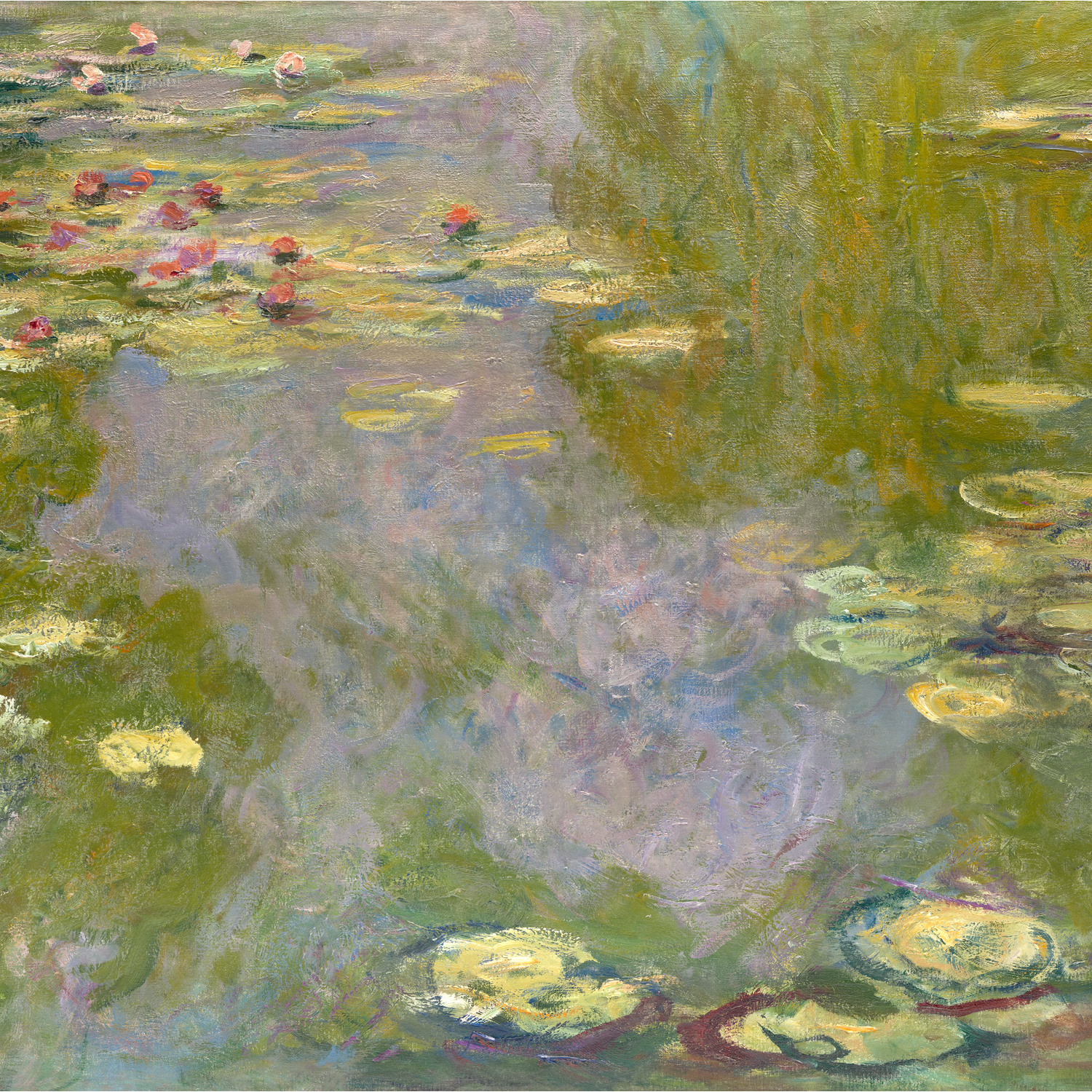1
/
of
6
Water Lilies (1919)
Water Lilies (1919)
Regular price
£12.45 GBP
Regular price
Sale price
£12.45 GBP
Taxes included.
Quantity
Couldn't load pickup availability
"Water Lilies" (1919) by Claude Monet captures the enchanting play of light and reflection on his beloved garden pond in Giverny. In this expansive composition, delicate pink and white water lilies float dreamily across a surface that mirrors the sky's shifting hues. The painting demonstrates Monet's mastery of loose, impressionistic brushwork, creating a seamless blend of water, flora, and atmospheric effects that nearly dissolves into abstraction.
This work belongs to Monet's larger Water Lilies series, painted during his later years when his eyesight was failing due to cataracts. Despite this challenge, or perhaps because of it, these paintings show remarkable innovation in their approach to colour and form. The artist spent countless hours observing his water garden throughout different times of day, seeking to capture the ephemeral qualities of light and atmosphere that became his signature artistic pursuit.
The piece exemplifies Monet's revolutionary approach to perspective, eliminating the horizon line to create an immersive, almost disorienting experience. This particular work showcases his technique of applying multiple layers of paint to achieve a luminous effect, with each brushstroke contributing to the overall impression of movement and depth. Created during the aftermath of World War I, this peaceful scene reflects Monet's desire to create art that offered solace and contemplation during troubled times, making it particularly resonant with viewers both then and now.
View full details
This work belongs to Monet's larger Water Lilies series, painted during his later years when his eyesight was failing due to cataracts. Despite this challenge, or perhaps because of it, these paintings show remarkable innovation in their approach to colour and form. The artist spent countless hours observing his water garden throughout different times of day, seeking to capture the ephemeral qualities of light and atmosphere that became his signature artistic pursuit.
The piece exemplifies Monet's revolutionary approach to perspective, eliminating the horizon line to create an immersive, almost disorienting experience. This particular work showcases his technique of applying multiple layers of paint to achieve a luminous effect, with each brushstroke contributing to the overall impression of movement and depth. Created during the aftermath of World War I, this peaceful scene reflects Monet's desire to create art that offered solace and contemplation during troubled times, making it particularly resonant with viewers both then and now.
